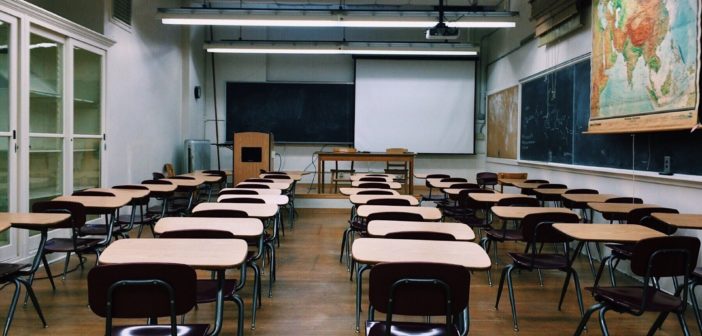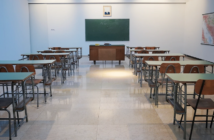When people think about the concerns of a school and its teachers, it is often grades and behaviour that come out on top. Of course, parents and teachers hope for the very best grades from their pupils. They also want them to behave well and build well-rounded manners and friendships.
However, other factors should also be of interest or concern to school teachers. One of these is comfort. Today, let’s discuss the comfort of students, how it affects their behaviour and studies, and therefore why it should be one of the schools top concerns. This material should be relevant to teacher, parent, and pupil alike. So, whether you have a school-age child or are a teacher yourself, read on to find out more.
Comfort At School
Think about yourself and your work environment. You probably set it up to be as comfortable as possible, right? If so, why shouldn’t that same logic be applied to pupils in a school? You know that your work feels better and that you perform better when seated comfortably, in a well-lit room, in a pleasant environment.
Now, try and take yourself back to your school days, if you can! Those seemingly long days sat at school tables, trying to concentrate on what your teacher was saying, being easily distracted. Can you remember if you were comfortable at school? Probably not. Until recently, it hasn’t necessarily been thought of that the school furniture should be comfortable. In fact, it’s probably fair to say that comfort was quite far down the list of priorities, after cost, durability, and size.
Why Is It Important?
But, why should comfort be top of the list? What does it matter how comfortable our kids are at school? Do they even care?
It’s not so much about whether they care. It does, however, affect how they perform. In 2016, The Holistic Evidence And Design project (HEAD) found that the performance of pupils was boosted by 16% when the comfort and ergonomics of the classroom were improved. Simply putting a little more thought into the design of classrooms can boost pupils performance by that much. It must be worth thinking about!
Another factor worth considering is pupils posture. You spend your formative years learning habits that you take with you into adult life. One of these is your sitting posture. So many adults now struggle with poor posture and painful backs due to never sitting properly as a child. A well-designed desk and chair can stop this from happening.
Comfortable Chairs
So if comfort is important, surely that all starts with chairs. Everyone remembers sitting on plastic, almost bucket-like chairs throughout school don’t they? Often, these cheap chairs were with us throughout our schooling years.
However, they are not suitable for children of all ages. A 15-year-old should not be sat in the same size chair as a 7-year-old. Chairs should be ergonomically designed to fit with the appropriate desk. They should be the right size for the pupil – so they neither have to slouch or have their feet dangling, and they should also have adequate support for the hips, lower back, and spine. Just like mentioned earlier – you know exactly how to feel comfortable in a chair at home or in the office, children should feel the same at school.
A Good Desk Is Key
As mentioned, the chairs need to suit the desk. This means the desk should be at a comfortable working height. Again meaning that no pupil should be hugely slouched over, though we all know some like to be! Younger pupils reaching high to peer over a desk while working is also highly inappropriate and not healthy.
A benefit of a good desk is its multi-functionality. Many desks are adjustable, meaning that children of different heights and sizes can all work in the same room. Often, they also come with drawers or other storage units built-in, perfect for high school form rooms.
Space Helps
Dealing with comfort isn’t all about the individual workstation, it’s also about space and the room as a whole. When thinking of comfort, you probably don’t imagine a crowded bullpen. Classrooms, however, often get overcrowded quickly. Schools expand, take on more students, and then forget that they have limited space.
Classrooms can – and should – be designed with space in mind. Even a slightly oversubscribed school can redesign working spaces to make them more spacious and comfortable. Again, doing so will lead to better energy and concentration in the room. Children do like – and need – to mix when at school, but when concentrating they’ll need to feel like they have enough room, too.
Lighting Matters
Adequate lighting is key to comfort and concentration. Nobody likes working in an office with no windows and horrible artificial lights. The school classroom should be just the same. Well lit with natural light, if possible, with great lighting to help on darker days. Poor lighting encourages tiredness, which is a huge factor in a school-aged child anyway! So, ensure that the classrooms in your school are well lit and feel bright to encourage alertness, concentration and willingness to learn.
A View Of The Materials
When designing a classroom, the focus should be on making sure all students can and do get involved. There should be no place in the room where there is an impaired view of the teacher, whiteboard, computer, or other systems required for learning. Even if your school has interactive tablets or laptops on every desk, the students should still have a direct line of vision to the teacher. Even the old school system, rows of desks all facing the same way, could be considered outdated now, as the children at the back often sink down into their chairs and hide away from classroom involvement. Instead, try and make your classrooms collaborative and comfortable for all.
With comfort being so important, it’s about time that people took more notice of it when building educational facilities. Making sure your child gets the best out of school is key and this is one of the ways to do so. Teachers themselves always want the best for their pupils, so they should have these things in mind at all times.





